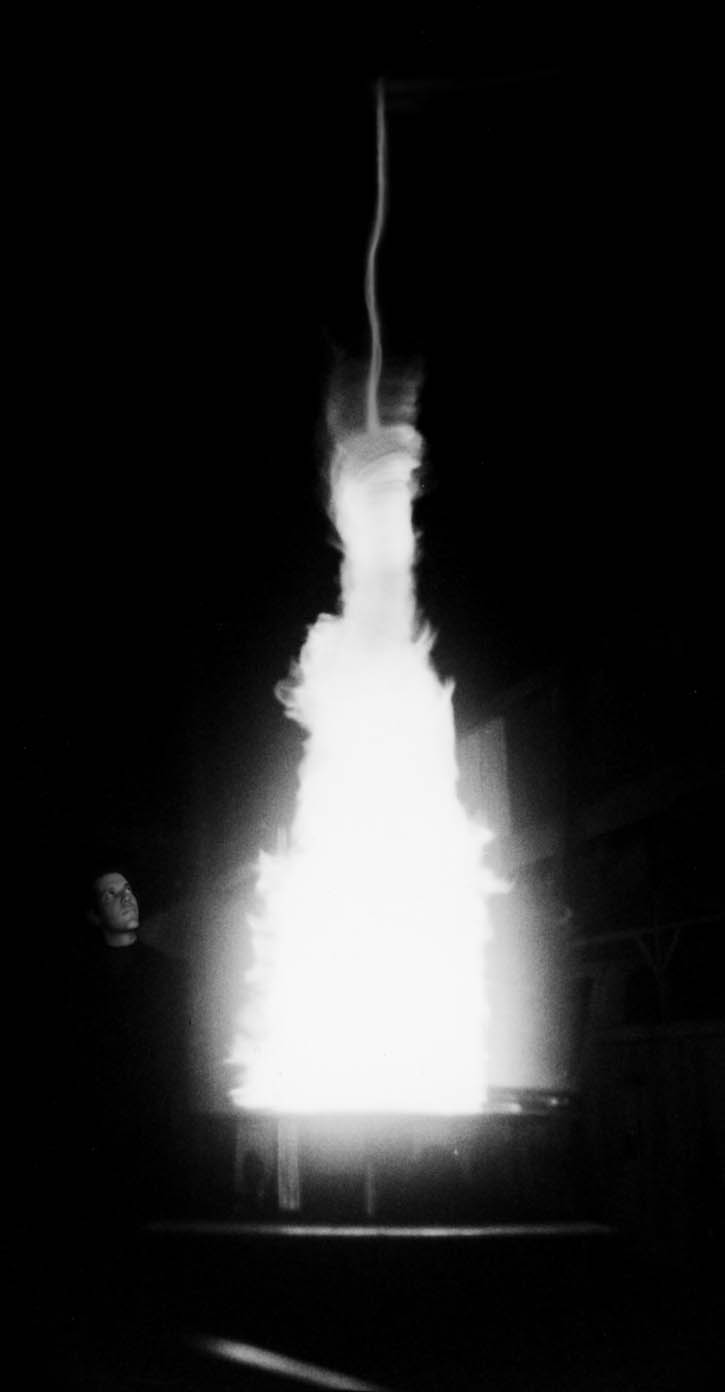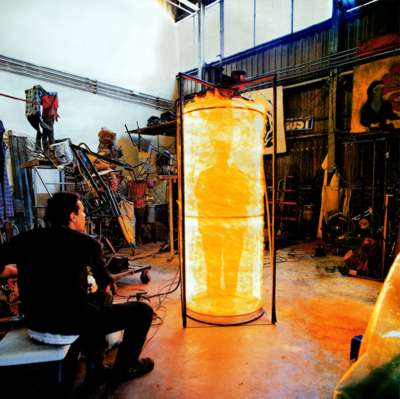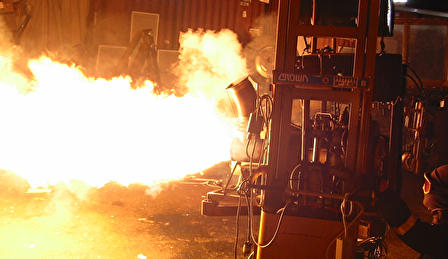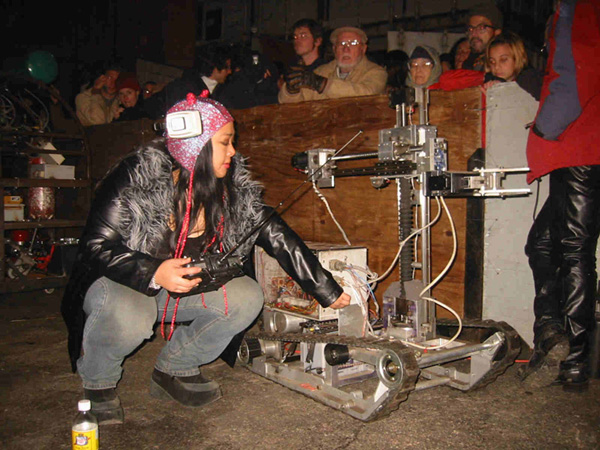|
Teaching / Lectures, Panels : Over 180 lectures, panel discussions, and seminars at locations such as: Oxford Univ, Yale, Commonwea
lth Club of SF, Stanford, Interval Research Corp., MIT, Rutgers, UCLA, Carnegie-Mellon, Stanford, Los Alamos Laboratories, SCIARC,
and at numerous locations throughout Europe, and Australia. Visiting professor, 1989 spring semester, Art Institute.
Television Appearances: Over 80 TV spots in the US, Europe, Australia, and Japan, ranging from interviews and video documentation sp
ecials to anonymous reports of mechanized pranksterism.
Publications: Over 420 articles and interviews both in print and on-line, in such publications as, Wired Magazine, NY Times, 21 C.,
Grand St. Magazine, Wall Street Journal, Washington Post, South Atlantic Quarterly, Parkett, Art in America, ID Magazine, Art Forum
, SF Chronicle, SF Examiner, Vogue, etc. Also featured in numerous books, including Mark Dery's "Escape Velocity" and Kevin Kelly's
"Out of Control".
Mark Pauline has received numerous grants for his work.
Survival Research Laboratories
was conceived and founded by
Mark Pauline in 1978. Since its inception, SRL has operated as an
organization of creative technicians dedicated to redirecting the
techniques, tools, and tenets of industry and science away from
their typical manifestations in practicality or product. SRL
has staged over 55 mechanized presentations in the United States
Europe and Japan. Each performance consists of a unique set of
ritualized interactions between machines, robots, and special
effects devices, employed in developing themes of socio-political
satire. Humans are present only as audience or operators.
|





